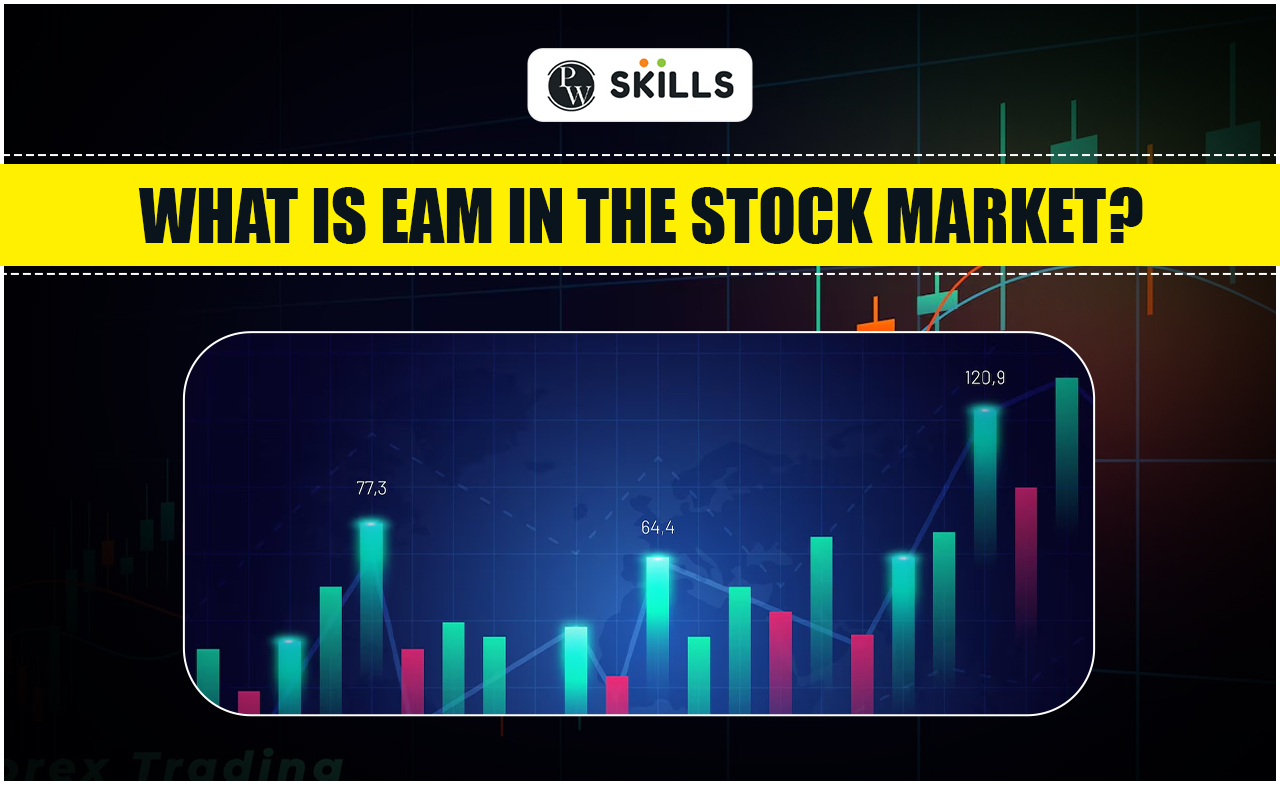An enterprise asset management (EAM) in the stock market is a system of tools and software that incorporates the management and maintenance of various physical assets and resources owned by an enterprise throughout the entire lifecycle.
It involves the planning of capital, procurement, installation, performance, compliance, risk management, and maintenance of the asset of a company or enterprise throughout its entire lifespan.
Importance of EAM (Enterprise Asset Management)
Enterprise Asset Management is important because of its ability and strength to enable companies to manage their assets effectively and to track, oversee, assess, manage, evaluate, and optimise the quality and reliability of the asset throughout the life of the company.
EAM has the following capabilities and strengths which can be used as given below:
- Asset Monitoring and Tracking: Enterprise Asset Management can manage the assets of the company in a very efficient and effective manner. It can easily manage and track the assets of the companies throughout their lifecycle. It helps in the maintenance of the assets easier and more reliable. It helps in real-time tracking and inventory management with the help of mobile and IoT (Internet of Things) integration.
- Supply chain management: EAM can help in the maintenance and effective and efficient functioning of supply chain management in various ways, such as leading to increased productivity of the system, minimizing the cost of the supply chain, better integration and communication with the partners, and fast and reliable maintenance and repair facilities.
- Amalgamation of Assets: It leads to the consolidation of data in a single place by the asset management team using standard processes. The asset data is now centralized and it can be accessed and used in a way the company wants and the managers know the location and status of the particular asset of the company.
- Effective Issue Resolving Mechanism: The Enterprise Asset Management system helps in the resolution of the issues and problems in the management and maintenance of the assets of the company. The asset managers with the help of EAM can easily find the asset-facing problems and issues which can be resolved in real time and efficiently without changing or altering other assets of the company.
Utility of Enterprise Asset Management
Enterprise Asset Management is used to keep track of the assets of the enterprise and manage them for maximum profit and with minimum downtime by saving time and money.
An EAM (Enterprise Asset Management) helps organizations keep track of their assets, which can be automobiles, manufactured products, industrial resources, technology equipment, and various other things, to the best of their ability to earn profits.

EAM Software can be used by individuals, enterprises, companies, or organizations to monitor and maintain their assets to have the best possible profit and return.
Enterprise Asset Management (EAM) is used in sharing knowledge and its training, centralizing asset data, safety measures, supplier collaboration, downtime, and analytics.
Thus, an enterprise asset management system is used in the management and maintenance of physical assets owned by a company or organization throughout the asset lifecycle.
It incorporates the usage of EAM at all levels from capital planning, procurement, compliance, installation, and risk management to disposal of the asset.
Benefits of Enterprise Asset Management System
Enterprise Asset Management provides the following benefits which lead to the better management and utilization of the assets of a company for the best profit and growth:

1. Use and Operation of maximum Assets
EAM (Enterprise Asset Management) effectively and efficiently manages and maintains the various assets of a company to have the best profit and be in the best interest of the company or enterprise.
It uses various scientific and mathematical formulas for the best utilisation and access of the assets of the company.
2. Safety and Reliability
The EAM system provides a safer and more reliable mechanism for managing and maintaining the assets of a company or organization. The various safety measures include the privacy of the assets and their non-disclosure. It helps in the prevention of the use of the asset in non-profiting and loss-making deals.
3. Work Order Management
Enterprise Asset Management provides a better and more effective way of managing work orders efficiently. These work orders include the organization of the activities among personnel and contractors that interface with the assets of the company.
If any problem is identified then the EAM will automatically assign the right resource immediately and will resolve the issue in real time.
4. Compliance
Adhering to any rule or law is compliance. Enterprise Asset Management has the high ability to comply with the rules and laws. Various companies and organizations have their own set of rules and regulations and have strict requirements for tracking sensitive data, in these situations EAM will be very effective and efficient for the management and security of the assets data.
What is the difference between ERP and EAM?
Enterprise Resource Planning (ERP) is the integrated and coordinated way of planning and managing the various departments and operations of a business. The ERP binds each and every department of the organization or company.
Without Enterprise Resource Planning companies or organizations having multiple departments will have multiple systems optimized for their specific tasks.
Enterprise Resource Planning allows the various departments of the company or organization to communicate and share information in an effective and efficient manner with one another.
ERP makes the company or organization self-aware by linking information about the various dimensions such as production, distribution, finance, and human resources.
The basic difference between EAM and ERP can be understood on the following parameters:
- Focus Area: The EAM mainly focuses on each and every asset of the company or organization. Whereas, the ERP focuses on all the activities, operations, and tasks of the various departments of the company or organization.
- The Scope of Management: Enterprise Asset Management manages the monitoring, tracking, and operation of the assets of the company. While Enterprise Resource Planning generally manages the various operations of the company.
- Maintenance: The EAM allows one to perform and schedule preventive maintenance. Whereas, ERP does not allow the performance of any preventive maintenance.
- Cost Efficiency: Enterprise Asset Management is used for getting the best profit by the management and operation of assets of the company; hence it overall saves money.
While Enterprise Resource Planning mainly helps in the management of the activities in the organisation hence it does not save money.
What is the difference between SAP PM and EAM?
SAP PM (Plant maintenance) is a comprehensive way of streamlining the process of maintenance and management in the organization. The SAP PM primarily focuses on the management of assets such as equipment, machinery, and facilities within an organization.
EAM is the optimum management of the assets of a company or organization for the entire lifecycle. The various subjects covered by EAM include design, construction, commissioning operations, monitoring, and maintenance of the assets of a company.
Whereas the activities of the SAP Plant Maintenance (PM) comprise Inspection, Preventive maintenance, and Repair.
The maintenance process in SAP PM focuses on the maintenance of the assets, which can be equipment or machinery. It can perform routine maintenance tasks, preventive maintenance, and corrective maintenance as well.
On the other hand, the EAM surpasses the traditional maintenance processes and involves a broader spectrum of maintenance processes.
Enterprise Asset Management Softwares
Enterprise Asset Management Software is a tool used to manage the assets of an organisation. It helps track the company’s costs and performance over a set period of time. An EAM system is used by individual entities, companies, or organizations to monitor their assets and make everyday decisions associated with asset lifecycle management, work order management, inventory management, and business performance management. It is used in knowledge sharing and training, centralizing asset data, safety regulation, supplier collaboration, analytics, and downtime. Know more about EAM software here.
Start Stock Marketing with PW Skills
If you are someone who is interested in starting to invest but somehow confused about where to start and what are the best practices to set the right pitch. PW Skills offers a Stock Market Course for Beginners.
This course is specifically curated to help you learn stock market fundamentals, terminology, and best practices under the guidance of expert, experienced investors and advanced interactive classes. Know more about upskilling programs at pwskills.com
EAM (Enterprise Asset Management) FAQs
1. What does EAM mean in investment?
Ans. EAM in investment stands for External Asset Manager. They work independently from the banks; they can be an individual or a company. They provide various services such as liquidity management, trading and the stock market, tax consultation, estate planning, etc.
2. Why do we need EAM?
Ans. Enterprise Asset Management is needed for the efficient and effective maintenance and management of the assets of a company or an organization throughout its entire life cycle. It helps in optimizing asset performance, minimizing operational cost, improving compliance etc.
3. What is an EAM consultant?
Ans. EAM consultant manages and maintains the technical assets of a company or an organisation which can be machines, automobiles, traffic infrastructure, data centers, networks, or an IT asset.

